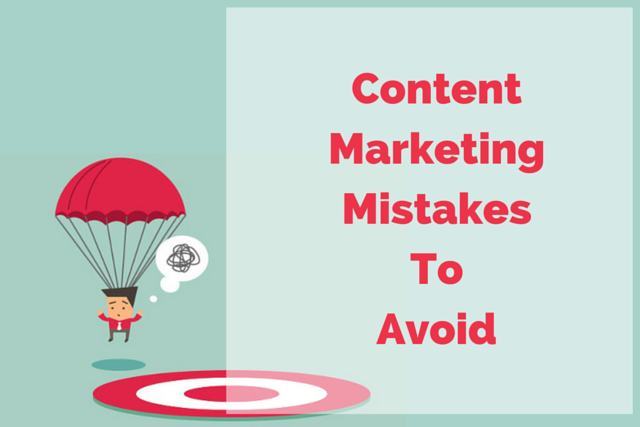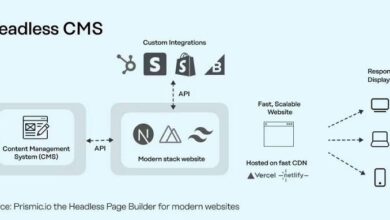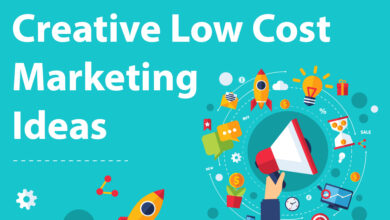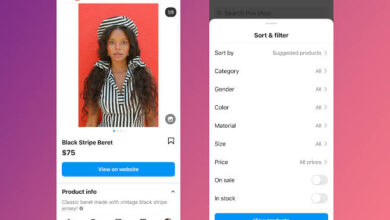10 Content Marketing Mistakes to Avoid in 2025

Content marketing has become one of the most effective ways for businesses to reach their customers, build trust, and grow their brand in today’s digital world. Simply put, content marketing is the practice of creating and sharing useful, interesting, or entertaining information that helps your audience solve problems or learn something new. This could be blog articles, videos, social media posts, podcasts, or even infographics. The goal is not to push sales directly, but to engage and connect with potential and existing customers by offering value first.
As we move on into 2025, the world of content marketing continues to evolve at a rapid pace. With new technologies like artificial intelligence, voice search, and changing user behaviours, what worked yesterday might not work today. Many businesses who continue to make the same old mistakes find their efforts falling flat, wasting time, money, and valuable opportunities. Avoiding these common pitfalls is essential if you want your content marketing strategy to succeed and stand out in such a crowded online space.
Knowing the most common content marketing mistakes to avoid can save you from costly errors and help you focus your energy on strategies that truly drive results. Whether you’re a small business owner, a marketer, or a content creator, understanding these mistakes will give you a clearer path to creating content that actually connects, converts, and builds lasting relationships.
In this article, we’ll explore the top 10 content marketing mistakes to avoid in 2025. From not knowing your audience or neglecting SEO, to over-relying on AI or ignoring mobile users, these are all critical challenges today’s marketers face. We’ll break down why each mistake matters, how it hurts your content’s performance, and practical tips you can use to steer clear of them. By the end, you’ll have a stronger, smarter approach to content marketing that reflects the latest trends and best practices.
Get ready to learn the key errors that could be holding your content back, and discover how to fix them so you can build a powerful, effective content marketing strategy for 2025 and beyond. Let’s dive in!
What is Content Marketing?
Content marketing means creating and sharing valuable content, like blog posts, videos, infographics, and social media posts, to attract, educate, and engage a specific group of people.
Instead of pitching products directly, it focuses on building relationships by answering questions, solving problems, or entertaining audiences.
When done right, content marketing drives traffic to your website, improves brand awareness, and converts readers into customers.
10 Content Marketing Mistakes to Avoid in 2025
Before diving into each mistake, understand that content marketing today requires a balance of creativity, data, consistency, and technology use. Ignoring key factors can waste your effort and money, while avoiding these pitfalls can boost your results dramatically.
1. Not Knowing Your Audience
This is arguably the most fundamental mistake, as it renders all other content efforts ineffective. Without a deep understanding of your audience, your content is essentially “throwing spaghetti at the wall and waiting for something to stick”. This means you’re creating material without a clear purpose or target, leading to wasted resources and attracting the wrong people.
Read Next: 25 Low-Cost Marketing Ideas That Actually Drive Sales
To avoid this, you need to conduct thorough audience research. This goes beyond basic demographics; it involves understanding their challenges, preferences, pain points, and the kinds of content they truly engage with.
For example, if you sell scheduling software, writing about general AI tools might bring in more traffic, but it won’t necessarily attract people who need your specific product.
Instead, focus on topics that directly address your ideal customer’s problems. By identifying your audience’s “pain points,” you can create content that offers real solutions, building trust and engagement.
2. Neglecting SEO (Search Engine Optimization)
Even the most brilliant content can go unnoticed if it’s not optimized for search engines. Ignoring SEO is like writing a captivating book and then hiding it in a drawer – no one will ever find it. This mistake means your content won’t rank high in search results, limiting its visibility and organic reach.
In 2025, SEO is more complex than just stuffing keywords. It includes understanding evolving search algorithms, optimizing for voice search, and considering how AI-powered search features will impact visibility.
To rectify this, prioritize keyword research to identify what your audience is searching for. Then, integrate these keywords naturally into your content, meta descriptions, and titles.
Regularly update your SEO practices to stay ahead of changes, ensuring your content is easily discoverable by your target audience.
3. Inconsistent Content Creation
An irregular publishing schedule can confuse your audience and signal a lack of commitment. If you post sporadically, your audience may lose interest or forget about your brand. Consistency builds expectations and helps maintain audience engagement, making your brand a reliable source of information.
The solution to this mistake is to implement a robust content calendar. This tool helps you plan your content creation and publication schedule, ensuring a steady stream of fresh material. It also helps in maintaining consistency in messaging and brand voice, which is crucial for building long-term relationships with your audience.
Regular content delivery establishes an “appointment” with your audience, making them more likely to return.
4. Overlooking Content Promotion
Many marketers mistakenly believe that simply publishing great content is enough. However, even the most valuable content won’t reach its full potential without proper promotion. This oversight means your hard work might only be seen by a small fraction of your potential audience, wasting effort and resources.
Effective promotion involves actively sharing your content across various platforms where your audience spends their time. This includes social media channels, email newsletters, and relevant online communities or forums. Consider applying the “80-20 rule,” where you spend 20% of your time creating content and 80% promoting it.
Collaborating with influencers or running targeted paid campaigns can also significantly amplify your content’s reach, ensuring it gets in front of the right eyes.
5. Failing to Measure and Analyze Results
Not tracking your content’s performance is like driving a car without a dashboard – you have no idea if you’re going in the right direction or running out of fuel. This mistake leads to repeating ineffective tactics and missing opportunities for improvement.
Without data, you can’t assess what resonates with your audience, which topics perform well, or which channels drive the most engagement and conversions.
To avoid this, regularly use analytics tools like Google Analytics, SEMrush, or HubSpot to monitor key metrics. Track page views, bounce rates, time on page, social shares, and conversion rates.
Analyzing this data helps you understand audience behavior, identify top-performing content, and pinpoint areas that need adjustment. This data-driven approach allows you to optimize your strategy, allocating resources to what truly works and discarding what doesn’t.
Read Next: How to Create a Brand Kit Using Canva AI
6. Lack of Originality and Creativity
In a crowded digital landscape, producing generic or derivative content will make your brand invisible. Copying others not only hurts your brand’s unique identity but also fails to capture audience attention.
This mistake can lead to low engagement and a perception of your brand as uninspired or unauthentic.
To stand out, strive for unique angles, fresh perspectives, and creative storytelling. Don’t be afraid to share personal experiences or insights that differentiate your brand. Instead of being “like everyone else,” focus on developing a distinctive voice and presenting information in innovative ways.
Creativity can involve new formats, interactive elements, or simply a novel approach to a common topic.
7. Producing Poor Quality Content
Low-quality content, characterized by grammatical errors, factual inaccuracies, or outdated information, severely damages your brand’s credibility and professionalism. Such content can deter readers, undermine trust, and reflect poorly on your brand’s attention to detail. It shows a lack of care and can make your audience question the reliability of your entire operation.
To counteract this, implement a rigorous proofreading and fact-checking process before publishing any content. Ensure all information is accurate, up-to-date, and presented clearly. Focus on clarity, conciseness, and readability.
For complex topics, break them down using subheadings and avoid overly technical jargon where possible. High-quality content builds authority and demonstrates expertise, which are crucial for attracting and retaining an audience.
8. Ignoring Visual Content
In today’s visually-driven digital world, relying solely on text-based content is a significant oversight. Humans are highly visual creatures, and ignoring this aspect can make your content seem dull and less engaging. This mistake can lead to higher bounce rates and lower retention, as readers may quickly lose interest in text-heavy pages.
Visuals like images, videos, infographics, and charts can significantly enhance content attractiveness and comprehension. They break up text, illustrate complex ideas, and make content more shareable across platforms.
Incorporating relevant and high-quality visuals can dramatically improve user experience, making your content more appealing, memorable, and effective at conveying your message.
9. Not Optimizing Content for Mobile Devices
With the majority of internet users accessing content on smartphones and tablets, failing to optimize for mobile devices is a critical error. Non-responsive websites, slow-loading pages, and content that’s difficult to read on small screens will quickly frustrate mobile users, causing them to leave your site. This directly impacts user experience and can negatively affect your search engine rankings.
Ensure your website is fully responsive, meaning it adapts seamlessly to different screen sizes. Prioritize fast loading times, clear font choices, and easy navigation for mobile users. Test your content thoroughly on various devices to guarantee a smooth and enjoyable experience.
A mobile-friendly approach is no longer optional; it’s essential for reaching and retaining a significant portion of your audience.
10. Over-Reliance on AI Without Human Oversight
While AI tools offer incredible efficiencies in content creation, from drafting to analysis, a complete handover to AI without human supervision is a significant mistake. Over-reliance on AI can lead to generic, repetitive, or even inaccurate content that lacks the unique voice, empathy, and emotional connection that human-created content provides. This can erode trust and make your brand seem inauthentic.
The key is to use AI as a powerful assistant, not a replacement for human creativity and judgment. Leverage AI for repetitive tasks, idea generation, or data analysis, but ensure every piece of content undergoes human review, editing, and refinement.
Combine AI’s speed and scalability with human insight, originality, and a deep understanding of your audience to maintain authenticity and deliver truly impactful content.
Read Next: How to Start an Online Store with No Tech Skills in 2025
Why Do You Need To Avoid These Content Marketing Mistakes?
Avoiding these common mistakes in 2025 will save you time, money, and a lot of frustration.
It helps ensure your content reaches the right people, builds trust and authority, and drives meaningful business results.
As competition rises and algorithms get smarter, only brands that focus on quality, relevance, and thoughtful use of technology will thrive online.
Conclusion
Mastering content marketing in 2025 means being clear about who you serve and delivering consistent, high-quality, creative content that’s easy to find and engage with.
Avoiding careless mistakes, from ignoring SEO and mobile users to relying too much on AI, can dramatically improve your results. Keep measuring, promoting, and refining your approach to make your content stand out and truly connect with your audience.
Start applying these 10 essential tips today and watch your content marketing efforts grow and succeed.
Frequently Asked Questions (FAQs)
1. Why is knowing my audience so important in content marketing?
Knowing your audience ensures your content addresses their needs and interests, making them more likely to engage, trust, and convert. Without this understanding, your content may miss the mark and fail to deliver results.
2. How does SEO impact content marketing success in 2025?
SEO helps your content rank higher in search engines, increasing visibility and attracting more organic traffic. In 2025, SEO includes voice search and AI trends, so staying updated is critical for effectiveness.
3. Can I rely entirely on AI for content creation?
No, while AI can speed up tasks, over-relying on it risks losing authenticity and quality. Combining AI’s efficiency with human creativity is key to producing trustworthy and engaging content.
4. What tools can I use to measure content marketing performance?
Popular tools include Google Analytics for web traffic, social media insights for engagement, and conversion tracking software. These help you understand what content works and guide improvements.




